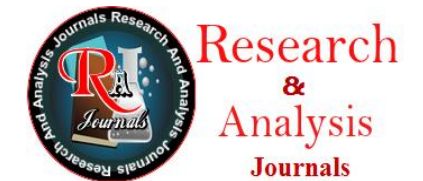A High Temperature Lithium-Aluminum Alloy/Oxygen or Air Fuel Cell
Downloads
The work reported in this paper is in support of our current effort in the development of an experimental hybrid (lithium-aluminum alloy/electrolyte/oxygen or air) fuel cell for the acquisition of the experimental data required to characterize its performance behavior.
The literature-based assembled formulation provided in this paper can be used to predict the cell open-circuit electric potential, lithium amount in the cell anode alloy, and g-atom ratio of lithium to aluminum in the cell anode as a function of time at any cell discharge current level. The ohmic voltage losses can also be computed in the cell cathode, anode, and two electrolytes at a cell
current level.
The computed ohmic-voltage loss data in the various components of the cell (Figure 1 in Section 1), during its discharge; for example, at the geometric current density of 0.10
G. Prantice, Electrochemical Engineering Principles, p.37, Prantice-Hall, Inc. (1991).
J.M. Smith, H.C. Van Ness, and M.M.Abbott, Introduction to Chemical Engineering Thermodynamics, p.494; 2005, 7th edition; McGraw-Hill Higher Education, Inc.
A.J. Appleby and F.R. Foulkes, Fuel Cell Handbook, pp.390-410, (1989). Van Nostrand Reinhold, New York.
A. Banerjee and O. Deutschmann, Elementary kinetics of the oxygen reduction reaction on LSM-YSZ composite cathodes. Journal of Catalysis, Vol. 346, February 2017, pp. 30-49.
R.J. Wiglusz, et al. Conductivity and electric properties of La1-xSrxMnO3 nanopowders. Journal of Rare Earths 27(4), pp. 651-654 (August 2009). DOI: 10.1016/S1002-0721(08)60308-7
M.A. Borik, et al. Structure and Conductivity of yttria- and scandia-doped zirconia crystals by skull melting. J Am Ceram Soc. 2017; 100 : 5536-5547. (https://doi.org/10.1111/jace.15074)
F.A. Cotton and G. Wilkinson, Advanced Inorganic Chemistry, p.51; 1972, 3rd edition. John Wiley & Sons, Inc. New York.
Y. Arachi, et al. Electrical Conductivity of the ZrO2-Ln2O3 (Ln-Lanthnides) system. Solid state Ionics. 1991; 121: 122-139.
R.J. Stafford, S.J. Rothman and J.L. Routbort. Effect of dopant size on the ionic conductivity of cubic stabilized ZrO2. Solid state Ionics. 1989; 37: 67-72.
[10] S. Rattanaphan and P. Kamlahasuth. Enhanced electric conductivity by modifying LiCl-KCl mole fraction at high temperature. Proceedings of 76th, the IIER International Conference, Tokyo, Japan, 20th July 2016; ISBN: 978-93-86083-61-6.
G.J. Jans, et al. J. Rhys. Chem. Ref. Data, Vol. 4, p.871 (1975).
J-Y. Kim, et al. Electrical conductivity measurement of molten salts using two-electrode alternative current impedance method. Asian Journal of Chemistry; Vol. 25, No (12) (2013), pp. 7028-7030. (http://dx.doi.org/10.14233/ajchem.2013.10)
D. Bernardi, et al. Mathematical Modeling of LiAl/LiCl, KCl/FeS cells. J. of the Electrochemical Society (ECS), Vol. 135, No. 12, pp. 2922-2931 (December 1988).
J.F. Shackelford, Introduction to Materials Science for Engineers, Chapter 11, pp. 528-544. (1992, 3rd edition), Macmillan Publishing Company, New York.
H.W. Davison, Compilation of Thermophysical Properties of Liquid Lithium. NASA Technical Note; NASA TN D-4650. National Aeronautics and Space Administration. Washington, D.C. July 1968.
C.J. Wen, et al. Thermodynamic and Mass Transport Properties of “LiAl”. J. Electochem. Soc.: Solid-State Science and Technology; Vol. 126, No.12 (December 1979).
J. Newman and N.P. Balsara. Electrochemical Systems, p. 174. (2021, 4th edition) John Wiley & Sons Inc.
Copyright (c) 2025 Sarwan S. Sandhu

This work is licensed under a Creative Commons Attribution 4.0 International License.
All Content should be original and unpublished.



